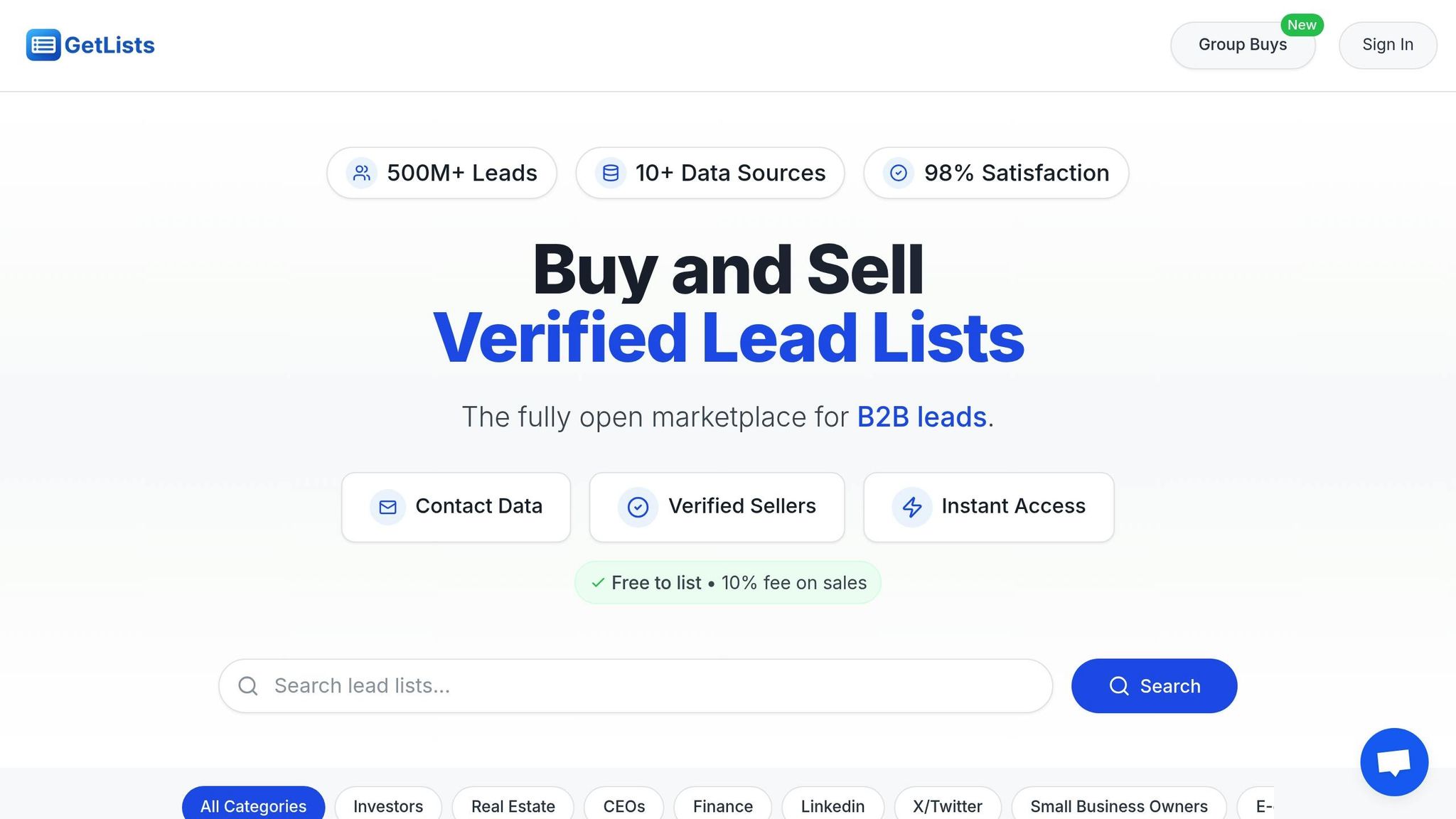
Enhance your B2B sales with effective lead segmentation strategies that drive higher conversions and build stronger customer relationships.
Want better B2B sales results? Start with lead segmentation.
Lead segmentation divides your audience into smaller groups based on shared traits like company size, industry, or behavior. This approach helps you focus on what matters most to each group, leading to:
To get started:
Segmentation isn’t just a tactic; it’s a must-have for long sales cycles. Start small, test strategies, and refine as you grow.
B2B segmentation relies on clear rules and reliable data to zero in on the best opportunities while aligning marketing and sales efforts with overall business objectives. Below, we break down the key steps for setting up effective segmentation and gathering the right data for targeted campaigns.
The foundation of a solid segmentation strategy is defining criteria that align with the specific traits of your target audience. These criteria should be measurable, precise, and actionable. This approach ensures your segments are meaningful and large enough to justify dedicated campaigns.
When you establish clear rules, you set the stage for campaigns that deliver focused outreach and better conversion rates.
To segment effectively, you need up-to-date and verified data. Here’s what to focus on:
Firmographic Data
Technographic Data
Behavioral Data
Decision-Making Data
Keep your data refreshed regularly to ensure it stays accurate and useful for your campaigns.
Grouping B2B leads by firmographics and role-specific details ensures your messaging hits the mark for each prospect. Beyond the basics, there are other ways to fine-tune your targeting.
Company-Based Criteria:
Role-Based Criteria:
To put your segmentation strategy into action, follow these four essential steps.
Before diving into segmentation, take a step back and assess your total addressable market (TAM). This helps you focus on the segments that are most aligned with your business goals.
What to Do:
The foundation of effective segmentation is solid, accurate data.
Where to Get Data:
Key Data to Track:
For a smoother process, tools like GetLists can provide verified B2B leads with detailed company and contact information. This ensures your segmentation is based on reliable, high-quality data. Once you have this data, you can create messaging tailored to each segment.
With your segments defined and data in place, it’s time to craft campaigns that address the unique needs and challenges of each group.
How to Build Campaigns:
Tip: Start small. Test your campaigns on a smaller audience within each segment. This allows you to gather feedback and make adjustments before launching on a larger scale.
AI-driven tools are transforming how B2B lead segmentation is done. These tools analyze massive datasets to uncover patterns and predict buyer behavior with impressive accuracy.
How AI Enhances Segmentation:
Even seasoned marketers can make errors when segmenting leads. Watch out for these pitfalls:
To streamline your efforts, tools like GetLists can provide accurate data to support your segmentation strategy.

Specialized platforms like GetLists can take your segmentation to the next level. With a database of over 500 million verified B2B leads, backed by more than 10 sources, GetLists ensures the data you use is reliable.
Why Use GetLists?
| Feature | Benefit |
|---|---|
| Industry-Specific Focus | Access tailored lists for your target industry |
| Quality Assurance | 24-hour money-back guarantee on purchases |
Start small by targeting a specific industry segment, then expand as you analyze performance. By combining GetLists' verified data with AI and predictive tools, you can create a segmentation strategy that’s both precise and results-driven.
Effective lead segmentation can deliver measurable results when done right. It plays a key role in B2B sales and marketing by helping businesses create more personalized experiences and boost conversion rates through targeted messaging.
To see the best results, start small. Focus on one or two critical segments first. As you gather insights and refine your methods, you can gradually expand your strategy. Effective segmentation isn’t a one-time task - it’s an evolving process that grows alongside your business and market trends.
To ensure your lead data is accurate and up-to-date, start by regularly verifying and cleaning your database. This includes removing duplicates, correcting errors, and updating outdated contact information. Using tools or services that specialize in data validation can also help maintain accuracy.
Additionally, consider sourcing verified business leads from reliable platforms. Verified data ensures you’re working with high-quality information, which is crucial for successful lead segmentation and targeting. Keeping your data fresh and accurate will improve your segmentation efforts and ultimately drive better results for your B2B sales strategy.
Over-segmenting your B2B leads can lead to several challenges that may hinder your sales efforts. Key risks include:
To avoid these pitfalls, focus on creating actionable segments that align with your sales goals. Strike a balance between specificity and practicality, ensuring that each segment is large enough to provide meaningful insights and opportunities. Regularly review and refine your segmentation strategy to ensure it remains effective and aligned with your business objectives.
AI and predictive tools can significantly enhance lead segmentation by analyzing large datasets to identify patterns and trends that might not be immediately visible to human teams. These tools use machine learning algorithms to predict which leads are most likely to convert, enabling sales teams to focus their efforts on high-value prospects.
By leveraging AI, businesses can create more precise and dynamic segments based on factors like behavior, engagement level, and firmographics. This results in more personalized outreach, improved resource allocation, and ultimately, higher conversion rates.